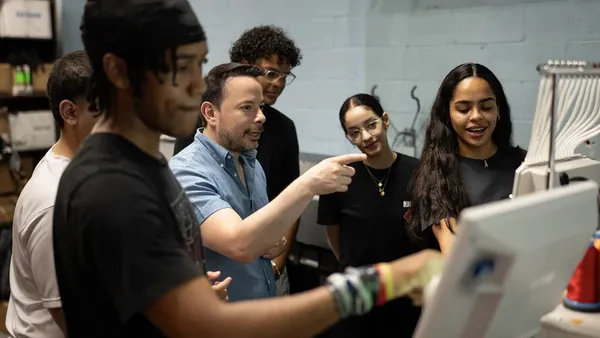Most clicked story of the week:
A large majority of hiring managers, 84%, say most high school students aren’t prepared to enter the workforce, according to a report by the U.S. Chamber of Commerce and College Board. On top of that, 80% say recent high school graduates are less prepared for the workforce compared to previous generations.
The 500 hiring managers surveyed say they value soft skills such as critical thinking and communication in entry-level hires. Nearly 90% say real-world experience gained through internships, career and technical education, or jobs is “most valuable” — even more so than a formal education. And 92% say there should be more business courses in high school.
Navigating mental health across the school community
- Superintendents are reporting less stress year over year, with the leaders of small school systems showing greater improvements to stress compared to those from larger districts, according to the State of the Superintendent report by Rand Corp. Across 13 job-related stressors, leaders of small districts were less likely in 2025 than last year to select almost each stressor — with the exception of school board relations and school board pressure.
- Children’s media safety and mental health organizations are strongly advising anyone under the age of 18 to stay away from popular AI companions — social chatbots programmed to use human-like features and develop human-AI relationships. Still, 72% of teens reported using AI companions at least once, according to a July survey by Common Sense Media, a research nonprofit that advocates for children’s online safety. More than half of teens said they interacted with these platforms at least a few times a month.
Special education in the spotlight
- Students with dyslexia, attention-deficit/hyperactivity disorder, slow processing speed and other learning disabilities that can impact their literacy progress need explicit, systematic instruction that directly teaches concepts, according to Miriam Ortiz, executive director of the Division for Learning Disabilities at the Council for Exceptional Children. Schools and districts should also commit to early identification and bring targeted, intentional, evidence-based instruction for these students, said Zabrina Cannady, director of professional learning for the Council of Administrators of Special Education.
- The least restrictive environment provision in the Individuals with Disabilities Education Act requires that schools educate students with disabilities alongside students without disabilities to the “maximum extent appropriate.” This means school officials should consider the general education classroom first when determining an educational setting for a student with disabilities. We break down what district leaders need to know in our latest Study Hall.
- A new report from the Children’s Equity Project at Arizona State University raises concerns about proposed cuts to formula grants for Title III funding aimed at language skills for new immigrants and English learners, changes to IDEA funding for those with disabilities, and rescinded guidance on how to enforce civil rights laws that protect English learners. The report recommends, among other things, that lawmakers fully fund IDEA.






 Dive Awards
Dive Awards






